Understanding of Religion through Objects in the Everyday Life of Muslims in Malabar
Abstract
This paper aims to understand religion through objects in everyday life among the Muslims in Malabar, Northern Kerala, through Simmel's theory of social forms. Religion among Muslims in Malabar is comprehended through the material form of belief, faith, ritual, performances, practices and ceremonies. Religious objects include mosques, shrines, dargahs, dresses, and clothes with religious importance, as well as fragrances and ornaments sold in religious spaces and encouraged by religious sources.
This essay attempts to answer some of the following questions: What are the religious objects in the everyday life of Muslims in Malabar? How do they perceive those objects within the confines of popular culture? How do those religious objects among the Muslims in Malabar negotiate with the larger social, economic and political systems?
To do this research, data are approached qualitatively using the content analysis method by referring to sections of books, articles, journals and websites. The data were sampled using purposive and convenient sampling and analysed using thematic analysis. Ethics are considered throughout the study, e.g., collecting online pictures from websites labelled for reuse. This study acknowledges the limitations challenged by the lack of empirical studies and the time constraints.
However, this paper will shed light on the research areas in religion and objects and pose the question for further research of how the post-modernist perspective of social reality redefines religiosity and religious objects.
Introduction
Like culture, religion is identified and understood by the materials and objects that are critical for the belief, faith, performance, rites and rituals, ceremonies, and functions of a particular religion. The first thing that may come to mind when discussing religion is the church of Christianity, the mosque of Islam, the synagogue of Judaism, the temple of Hinduism, Buddhism, Jainism and Zoroastrianism, and the Sikh gurudwara. However, these are the public manifestations of the religion, while the religion follows the entire life of every follower of religion through objects.
While discussing Malabar, Northern Kerala, as the subject matter and the field of study, the region has its Islamic history that takes the reader back to the 7th century B.C., when the prophet Mohammad was alive. Over more than fourteen decades, Islam evolved in Malabar through Arab sailors and traders' collaboration and organisation, reorganisation, reformation and secularisation over the centuries (da Vinci, 2024).
However, Muslims in Malabar in the twenty-first century have evolved into a microcosm in itself with a wide range of characteristic features concerning religious objects, starting from clothes, caps, keffiyeh, hijab, niqab, arak, and so on, to mosques, sepultures, inscriptions, dargah, and other institutes with religious importance such as dars, Arabic colleges, and newly evolved Islamic universities and Islamic educational institutes.
Islam is social; hence, contextual and particularistic knowledge is crucial. It is pertinent to lactate the subject matter in the sociological imagination of historical, cultural, structural and critical factors (Germov & Williams, 2017, p.6). These factors determine the social systems of Malabar Muslims, including the religious system.
Literature Review
Studies on religion and its material culture are widely discussed on a grassroots level. In 2009, David Morgan combined his edited volume, "Religion and Material Culture: The Matter of Belief" (Morgan, 2009). Morgan collected a group of topics from various scholars and combined them to examine religious objects, such as images and spaces for devotion in everyday life practices (Morgan, 2009). He emphasised how one can pursue and scrutinise how people believe and feel in a specific religion and how they perform in a particular space through understanding the religious objects (Morgan, 2009). Anthropologically speaking, he expresses that objects within the confines of religion are paid attention to their religious, spiritual or ritual value rather than the financial or aesthetic value attached to it. On the other hand, sociology focuses on the surviving structures, functions, meanings and power dynamics of religion and religious objects. It is where sociology differs from its counterparts and brother disciplines like theology, mythology, philosophy, and anthropology.
Islam, seen as more social and cultural in its attributes, has much to do with its diverse and multiple objects, which vary in history, geography, environment, climate, culture, and groups. A renowned Islamic thinker, Ibn Arabi, proposed that all objects in the world possess their own form of speech (Chittick, 1989, p. 246 & Bigelow, 2021). Every possible thing must have its dialect or speech that humans cannot comprehend (Chittick, 1989, p. 246 & Bigelow, 2021). The Islamic notion of materials and things originated in the Quran, Islam's central and primary religious text. It is revealed in the Quran that "the seven heavens, the earth, and all those in them glorify Him. There is not a single thing that does not glorify his praises—but you simply cannot comprehend their glorification. He is indeed Most Forbearing" (Quran, 17:44 & Quran.com, n.d.)
According to George Simmel’s theory of religion, where religion confronts an object, it transcends into religiosity. The significance of the objects, such as complex God and religious doctrines, is not as important as religiosity itself. Simmel based his theory of religion on his theory of social forms, which distinguishes religion into religiosity as content and religious objects as forms (Furseth & Repstad, 2017, p. 39). This classification has since drawn the attention of scholars, it redefined the religion through its objects.
In their discussion of objects, Jones and Jones share their analysis of how objects endure and are used in the religious performance of belief, faith, rituals, functions and ceremonies and how the complexity of those performances and practices can be revealed (Matthews-Jones & Jones, 2015, p. 11). In their understanding, objects are conceived to be a mediator for several religious performances. However, this conceptualisation of religious objects and the meaning attached to them change and transform concerning the different performances in various cultures. Unless those objects are placed in a particular culture or space, their meaning cannot be comprehended.
Analysis
Religion and Society
Various scholars suggested that an extensive understanding of religion is essential for the experience of society and its different social systems. Understanding any social system requires understanding other interrelated systems. Understanding any social reality isolated with its historical, cultural, structural and critical factors, is incomplete and sociological analysis is possible if it is placed under the sociological imagination that tends to focus on biography, history and their interaction with larger society (Germov & Williams, 2017, p.6)
Religiosity and Religious Objects
Regarding religious objects, German sociologist and philosopher George Simmel studied and classified religion's material and non-material forms a hundred years ago. In his long-term study of religion, including his 1906 essay, “ A Contribution to the Sociology of Religion,” and his famous book, “Religion,” published in 1912, Simmel perceived religion as a combination of content and form, in which he approached most theories using his consistent theme, social forms (Furseth & Repstad, 2017, pp. 38-39).
Religious Objects and the Context In Islam
Religious objects among Muslims are diverse and widely studied in various cultural and geographical contexts. The emergence of the Muslim middle class contributed to the contextual interpretation of Islam within the disciplinary boundaries and public realm. It emerged broadly after the formation of the urban Muslim middle class (Kitiarsa, 2007, p. 205).
Objects play a significant role in Muslims' everyday lives. The Quran, the prophet Mohammad's teachings, the consensus of Muslim scholars, and analogies with other occurrences are substantial sources in Islam (CWR University School of Law, 2023). All these sources appreciate different forms of objects in Muslims' everyday lives.
Religious Objects among the Muslims in Malabar
Islam is one of the prominent religions in the West Coast region of South India, eminently known as Malabar. Malabar comprises 40% of the Muslim population and has a higher fertility rate (Rao, 1993, pp. 22-24). Six districts in Northern Kerala are called Malabar, such as Kannur, Kozhikode, Wayanad, Malappuram, Palakkad, and Kasaragod, and they have diverse cultures and traditions (Kerala Tourism, n.d.).
Islam manifests not only in the larger institutionalised spaces such as mosques, dargahs, or madrash, which are widely seen as religious spaces in Malabar, but it also appears in the daily life of Muslims. Their beliefs, rituals, practices, functions, performances, festivals and even daily habits significantly matter in the religious objects. These social forms are included in the social science term called popular culture. John Storey defined popular culture as “culture, which is widely favoured or well-liked by many people” (Storey, 2011, p. 6 & Yusuf; Chaniago, 2022, p. 2).
The Veiling of Muslim Women
Wearing modest clothes is fundamental in Islam. The Hijab, the use of a veil for Muslim women, is defined as something beneficial or harmful. Historically speaking, the Hijab was formed in the 6th and 7th century AD to elevate the honour and dignity of women, annihilating the oppression and discrimination of the jahiliyyah tradition where newborn children were buried alive if they
were girls. Hence, the introduction of the Hijab in Islam is considered to be “a form of anti-discrimination against women” (Yusuf & Chaniago, 2022, p. 1). The oriental’s narratives perceive a veiled woman as subjected to fantasies. The Hijab is also conceived as the icon of “obedience and piety” to God. Hijab redefines women’s bodies by reclaiming security and safety from “being objectified” and empowers women (Adenhafsa, 2015).
Muslim women cover their entire body with a Hijab or purdah, and sometimes they veil their face with Something called niqab. The idea of the Hijab and niqab is now portrayed in Malayalam movies such as the 2018 movie Sudani from Nigeria, the 2022 movie Thallumala, and Kothu. The movie Sulaikha Manzil, released in 2023, caught the attention of the people in Malabar, showing the middle-class marriage function of the middle-class Muslim family in Malabar. The movie portrays the day-to-day life and socio-economic conditions of Muslims in Malabar, which are connected to marriage and the most significant function in the Malabar Mappila family (Ramachandran, 2023).
In the film Sulaikha Manzil, Hijab is portrayed as modern, turning away from the restrictive portrayal of Orientalist scholars. The release of these movies during the Ramzan holidays hits the Kerala Muslim audience and increases the importance of religious social forms in Muslim popular culture. In the 2022 movie Koth, the niqab, which covers the face of women except for the eyes, is subjected to liberal communist comments within the film. The exact form of the religious object is portrayed as the symbol of conformity in the former and as a symbol of resistance in the latter.
The Wearing Muslim Men
Some scholars perceive Muslim men in Malabar are comparatively less modernised, “wearing ankle-length checked lungis, which are the rough cotton waist cloths, held up by a belt and vest, along with a skull cap.” Osella and Osella attributed them as the “backwards others” (Osella & Osella, 2007, pp. 233-352). Although this attire is commonly associated with the larger population, the urban majority of Muslims have long been adapting to the modern lifestyle and fashion.
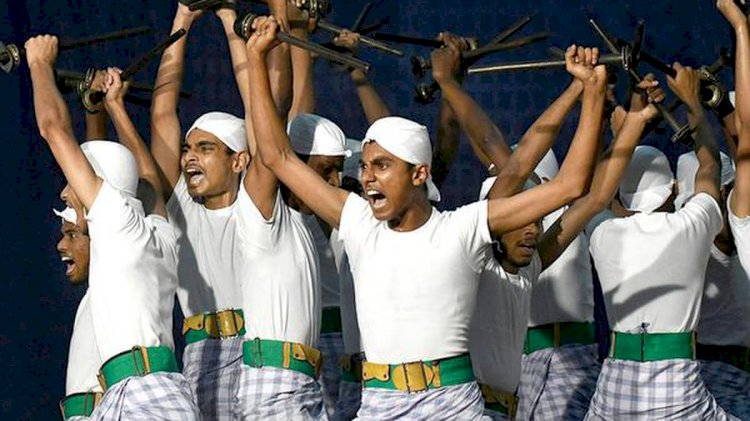
Image 1[1]: Kolkali, a traditional art form of Malabar, wearing ankle-length checked lungis, rough cotton waist cloths held up by a belt and wearing a towel.
Muslim men usually wear thoppi (skullcap) when performing the five prayer times. These skullcaps are typically embroidered by foreign companies and traditional handmade dress agencies. Thalangara, a small village in the Kasaragod district, has its own tradition of handmade skull caps made by a few Muslim families in Thalangara. This skull cap is popularly known as the Thalangara thoppi, made of cotton wool and embroidered in different colours and arts (Kerala Tourism, 2019). It is one of the several traditions in Malabar that is famous for its shopping and thalappavu, typically worn by older people, Muslim scholars, and their disciples. These two types of clothing endure among many religious scholars, preachers, and their students in Malabar. A new form of shopping is seen among the Muslims in Malabar, adopted from different cultures and influenced by the Muslim lifestyle of Ottoman Turkey, Oman, Morocco, Saudi Arabia and Egypt, starting from the early relationship with Arabs and Turks. The elderly Muslims in Malabar wear keffiyeh, which was widely popular during the Arab revolution and continues worn by Muslims of all ages, giving solidarity to the Arab freedom fight.
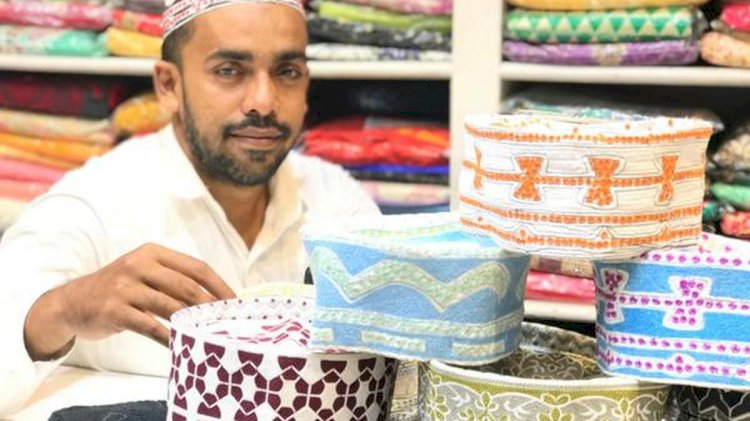
Image 2: Thalangara thoppi[2]
Ornaments and Fragrances in the Popular Culture
Islam promotes various performances and practices associated with specific objects in everyday life. Those objects are widely seen and sold in spaces of religious significance. Mosques, shrines, and dargahs in Malabar serve as active pilgrimage sites with numerous visitors. These spaces are accompanied by nearby shopping areas selling sweets, ornaments, and fragrances. Silver rings and non-alcoholic perfumes are popular and religiously encouraged for Muslim men. The shrine of Mampuram Thangal, a prominent religious leader of the Malabar Muslims, is a noted example of the larger pilgrimage space in Malabar (Kerala Tourism, n.d.). Mamburam shrine is also famous for its adjacent shopping complex and a street market with large amounts of religious commodities, including dresses for all genders, fragrances and non-alcoholic perfume called Oud and attar, eminent religious texts, aesthetic and sacred objects with religious script and texts hanged at homes, and the things offered for the shrines during the visit.
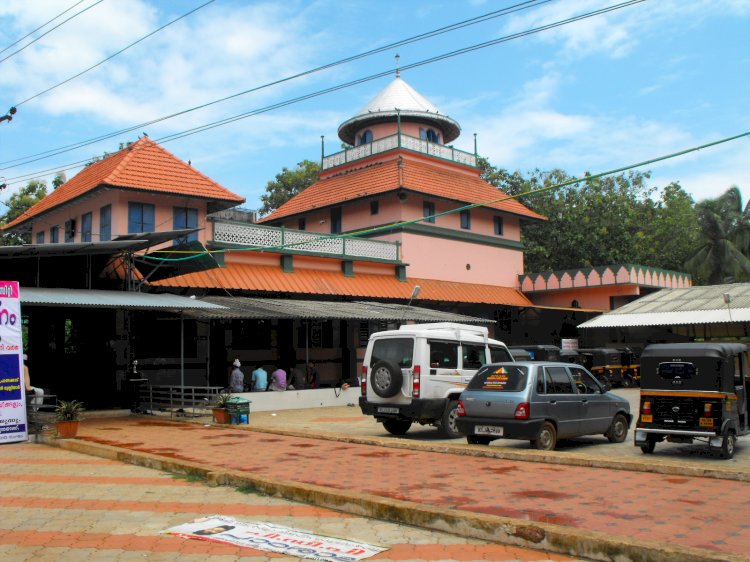
Image 3: Mampuram maqam[3]
These places allow people irrespective of religion. Even Muslims come to these spaces to shop for religious objects, and they seek sacredness for their daily objects and materials, such as vehicles and food, by presenting them before the shrines and dargahs.
Conclusion
This study finds several social forms in the religious system in the everyday life of Muslims in Malabar. The hijab and niqab are viewed and portrayed as either conforming to modern redefining the Muslim women’s body or restricting the freedom of women. These ideas are manifested through the Malayalam films. Muslim men in Malabar are found to be divided into two; one persisting the traditional way of life and continuing to wear the so-called Malabar
Mappila dresses, which Osella and Osella attributed as the backward other and other groups, have been well adapted to the modern lifestyle and fashion (Osella & Osella, 2007, pp. 233-352). The other group of Muslims in Malabar are people engaged in religious preaching, teachings, and studies. They have their own dressing style about their status and role in the Muslim Community in Malabar. However, specific dresses, wears, and other materials are common to all Muslims, including thoppi, the skull-cap, and thalappavu, a typical cotton veiling over the head. The consumption of non-alcoholic fragrances such as perfumes, Oud, and attar, and ornaments such as silver rings having a precious stone are encouraged Islam and widely seen among the Muslims in Malabar. These materials and objects are extensively seen adjacent to the larger socio-religious spaces like mosques, Shrines and dargahs.
References
Adenhafsa. (2015, December 1). The Evolution of the Portrayal of Hijab in Popular Culture. WordPress. Retrieved 4 21, 2024, from
https://lookinginthepopularculturemirror.wordpress.com/2015/12/01/the-evolution-of-the portrayal--of-hijab-in-popular-culture/
Case Western Reserve University School of Law. (2023, August 14). Primary Sources - Islamic Law - Research Guides at Case Western Reserve University Law Library. Research Guides at Case Western Reserve University Law Library. Retrieved April 19, 2024, from https://lawresearchguides.cwru.edu/c.php?g=819978I&p=5851791
Chittick, W. (1989), The Sufi Path of Knowledge: Ibn al ‘Arabi’s Metaphysics of Imagination, Albany, NY: State University of New York Press.
da Vinci, L. (2024, March 12). Kerala - Indian State, Spice Trade, Colonialism. Britannica. Retrieved April 19, 2024, from https://www.britannica.com/place/Kerala/History Flickr. (2012, June 21). Wikipedia. Retrieved April 21, 2024, from
https://www.flickr.com/photos/94592664@N00/7413029672
Germov, J., & Williams, L. (2017). A Sociology of Food & Nutrition (4th ed., p. 6). Oxford University Press, USA.
John Storey, Cultural Theory and Popular Culture, London, 2011, p. 6
Kerala Tourism. (n.d.). Districts in the Malabar Region of Kerala. Kerala Tourism. Retrieved April 20, 2024, from https://www.keralatourism.org/malabar/districts/19
Kerala Tourism. (2019). Prayer Caps of Thalankara. Kerala Tourism. Retrieved April 21, 2024, from https://www.keralatourism.org/kerala-article/2019/thalankara-thoppi/971 Kerala Tourism. (n.d.). Mampuram. Kerala Tourism. Retrieved April 21, 2024, from https://www.keralatourism.org/destination/mamburam/36
Kitiarsa, P. (2007). Religious Commodifications in Asia (1st ed., p. 205). Routledge. Matthews‐Jones, L., & Jones, T. W. (2015). Introduction: Materiality and religious history. In Palgrave Macmillan US eBooks (pp. 1–14). https://doi.org/10.1057/9781137540638_1 Nainar, N. (2018, June 7). Ramzan season: prayer cap and the Islamic fashion industry in India. The Hindu. Retrieved April 21, 2024, from https://www.thehindu.com/society/the-prayer-cap-and-the-islamic-fashion-industry/articl e24101986.ece
Paul, S. (2018, December 8). Is Kolkali’s core under threat? | Latest News. The Hindu. Retrieved April 21, 2024, from https://www.thehindu.com/news/national/kerala/is-kolkalis-core-under-threat/article2570 0190.ece
Ramachandran, A. (2023, June 11). Muslim characters in Malayalam cinema: Kerala filmmakers like to keep them realistic. The South First. Retrieved 4 21, 2024, from https://thesouthfirst.com/entertaiment/muslims-characters-in-malayalam-films-native-fil mmakers-like-to-keep-them-realistic/
Rao M. (1993). The communication of population growth. Health for the millions, 1(1), 22–24. Morgan, D. (2009, 10 27). Religion and Material Culture: The Matter of Belief. Routledge. Retrieved April 19, 2024, from https://www.routledge.com/Religion-and-Material-Culture-The-Matter-of-Belief/Morgan/ p/book/9780415481168
Nisar. M, A. (2014). Religion and Popular Culture_ a Study of Kerala Muslims. Shodhganga. Retrieved 4 20, 2024, from http://hdl.handle.net/10603/394017
Osella, C., & Osella, F. (2007, June). Muslim Style in South India. Fashion Theory, 233-352. http://dx.doi.org/10.2752/136270407X202790
Quran.com. (n.d.). Surah Al-Isra - 44. Quran.com. Retrieved April 19, 2024, from https://quran.com/al-isra/44
Yusuf, S., & Chaniago, R. H. (2022, January). Women Hijab in the Arms of Media, Popular Culture and Globalization. (p. 1) http://dx.doi.org/10.36782/i-pop.v3i1.159
Endnotes
[1] the Hindu
[2] Nahla Nainar, the Hindu
[3] Flickr
Disclaimer
The views expressed in this article are the author’s own and do not necessarily mirror Islamonweb’s editorial stance.

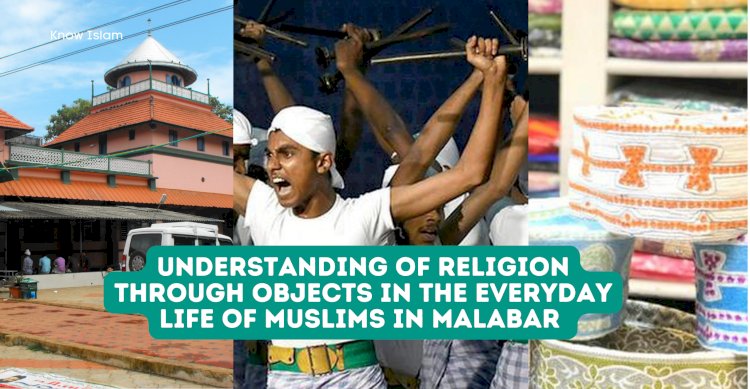



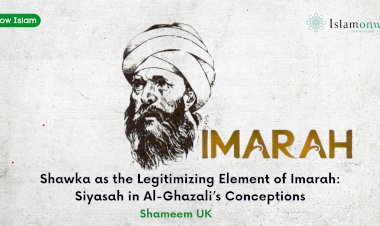
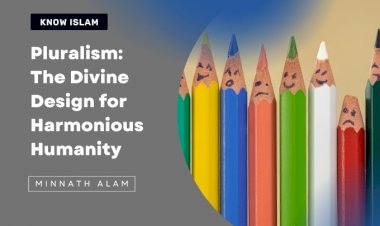
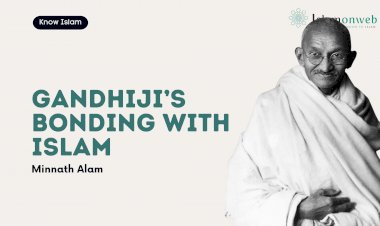
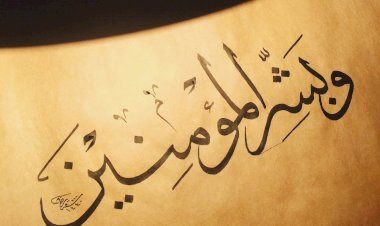
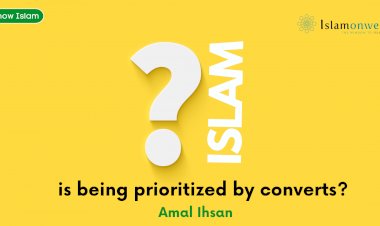














Leave A Comment